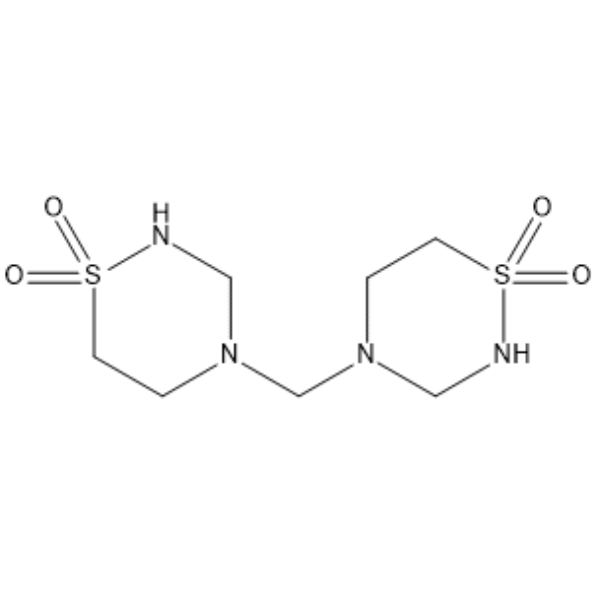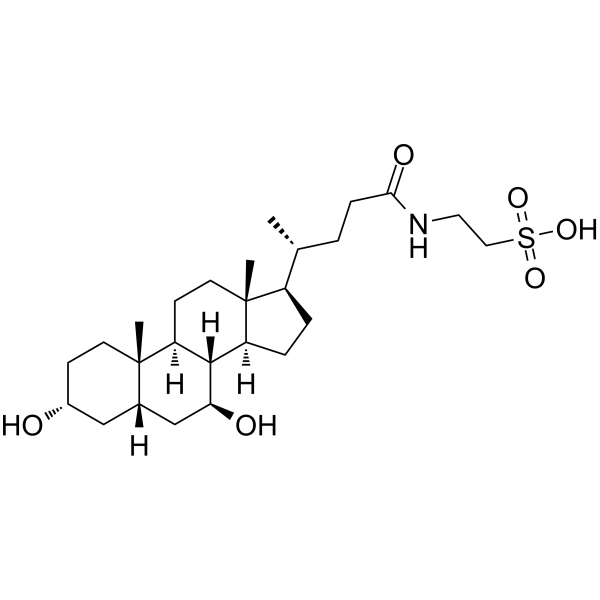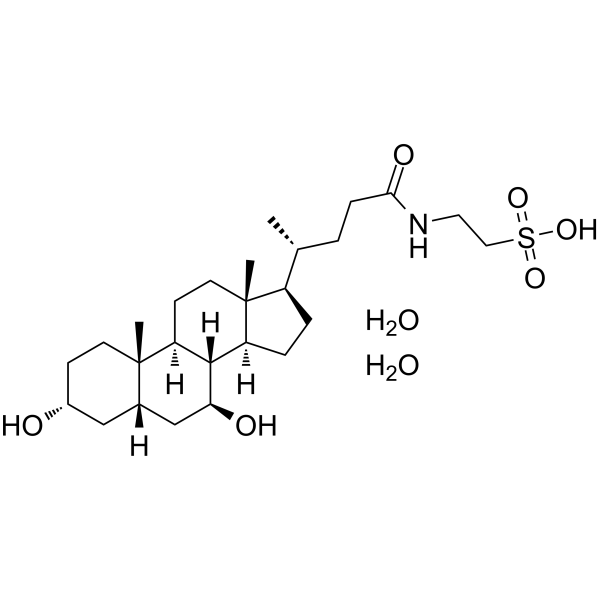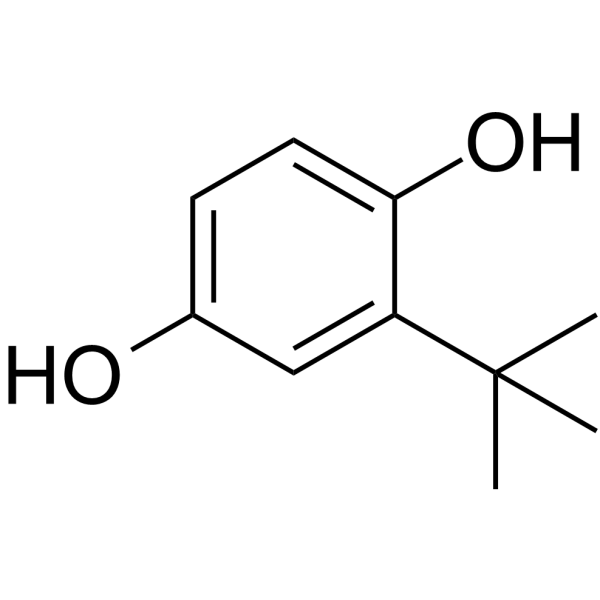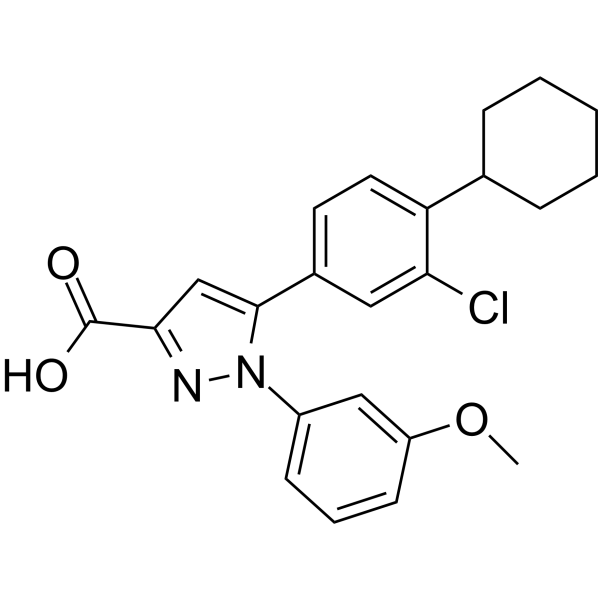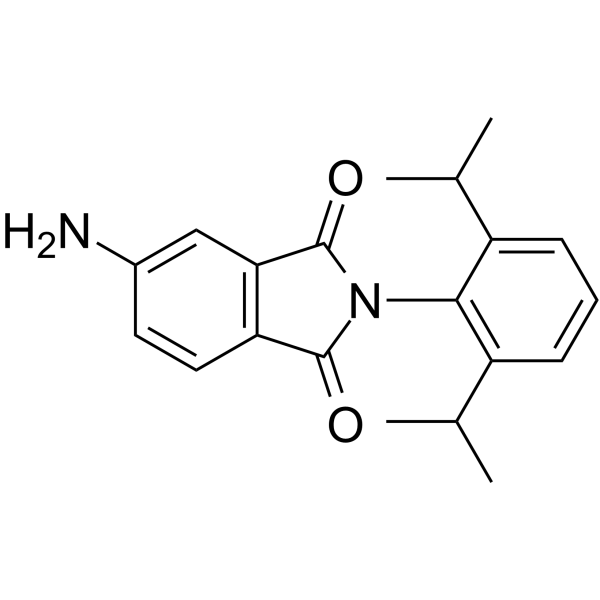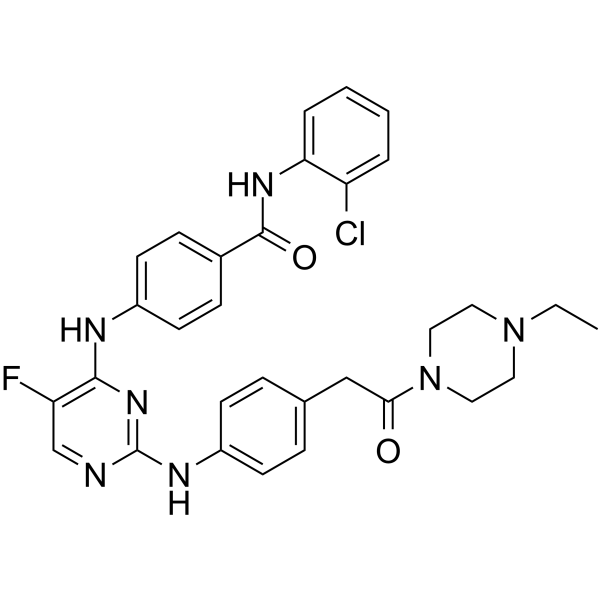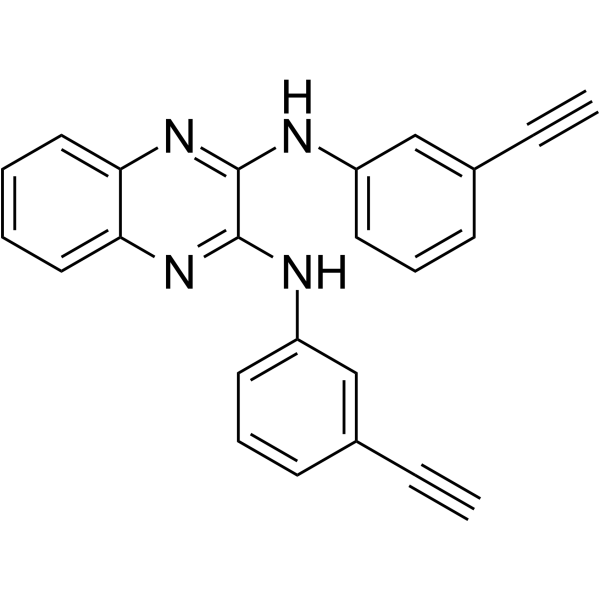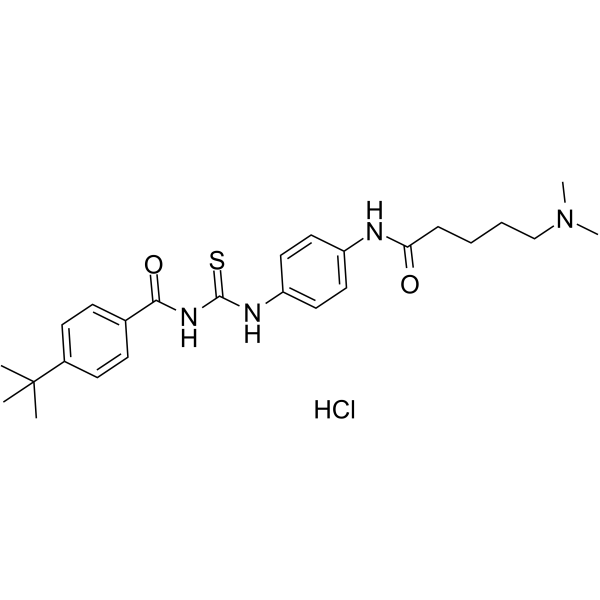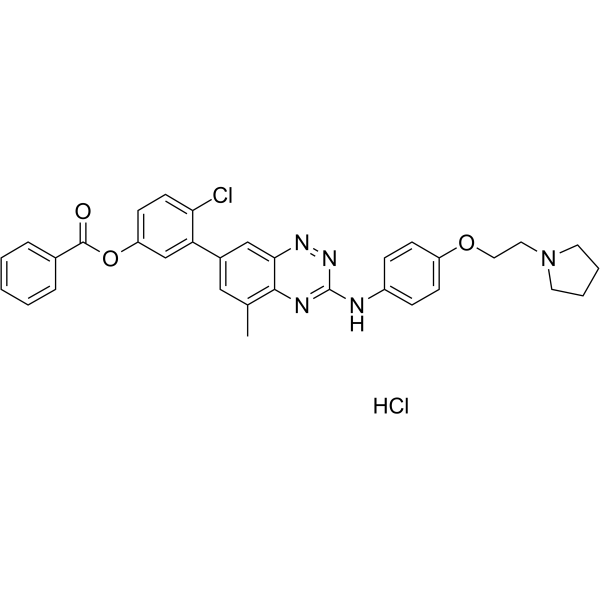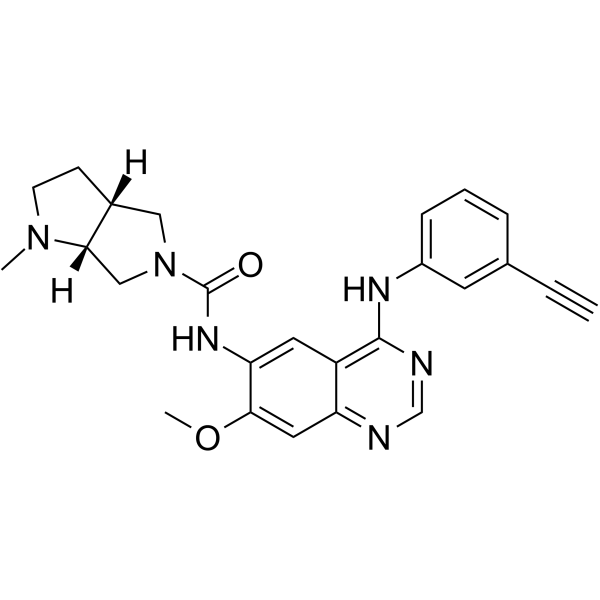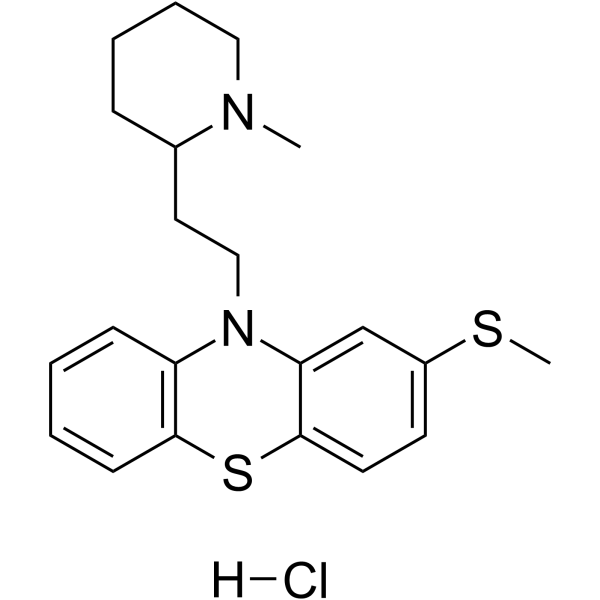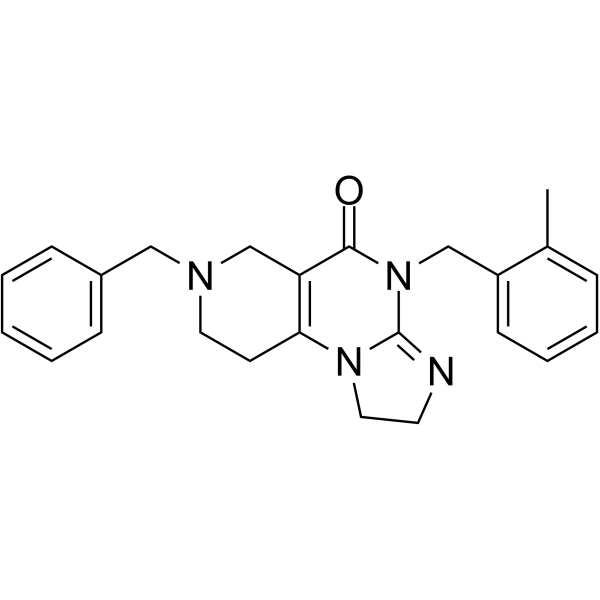|
BP10885
|
Taurolidine
|
|
|
|
|
Taurolidine is a broad-spectrum antimicrobial for the prevention of central venous catheter-related infections. Taurolidine has a direct and selective antineoplastic effect on brain tumor cells by the induction of apoptosis.
|
|
BP10568
|
Tauroursodeoxycholate
|
|
|
|
|
Tauroursodeoxycholic acid is the more hydrophilic form of ursodeoxycholic acid, which is the more abundant naturally produced bile acid in humans. Tauroursodeoxycholic acid, on the other hand, is produced abundantly in bears and has been used for centuries as a natural remedy in some Asian countries. Tauroursodeoxycholic acid is being investigated for use in several conditions such as Primary Biliary Cirrhosis (PBC), insulin resistance, amyloidosis, Cystic Fibrosis, Cholestasis, and Amyotrophic Lateral Sclerosis.
|
|
BP10195
|
Tauroursodeoxycholate dihydrate
|
|
|
|
|
Tauroursodeoxycholate dihydrate is an endoplasmic reticulum stress inhibitor. Tauroursodeoxycholate also inhibits ERK. Tauroursodeoxycholate significantly decreases the expression of apoptosis molecules, such as caspase-3 and caspase-12.
|
|
BP10892
|
TBHQ
|
|
|
|
|
Tert-butylhydroquinone (tBHQ) is an antioxidant that induces an antioxidant response through the redox-sensitive transcription factor Nrf2.
|
|
BP10008
|
TC LPA5 4
|
|
|
|
|
TC LPA5 4 is a LPA5 (GPR92)-specific non-lipid antagonist. TC LPA5 4 inhibits LPA-induced aggregation of isolated human platelet (LPA5-RH7777 cell line) with an IC50 of 800 nM. TC LPA5 4 displays selectivity for LPA5 over 80 other screened drug targets. TC LPA5 4 inhibits cell proliferation and migration of thyroid cancer cells.
|
|
BP10012
|
TC11
|
|
|
|
|
TC11 is a MCL1 degrader. TC11 is also a Caspase-9 and CDK1 activator. TC11 structurally relates to immunomodulatory drugs as phenylphthalimide derivative. TC11 induces apoptotic death caused by degradation of MCL1 during prolonged mitotic arrest.
|
|
BP10314
|
TCS 21311
|
|
|
|
|
TCS 21311 (NIBR3049) is a potent, highly selective JAK3 inhibitor with an IC50 of 8 nM, it displays >100-fold selectivity over JAK1, JAK2 and TYK2. TCS 21311 (NIBR3049) inhibits PKCα, PKCθ, and GSK3β with IC50s of 13, 68, and 3 nM, respectively.
|
|
BP10180
|
TCS7010
|
|
|
|
|
TCS7010 is a potent and highly selective Aurora A inhibitor with with an IC50 of 3.4 nM.
|
|
BP10789
|
TD52
|
|
|
|
|
TD52, an Erlotinib (HY-50896) derivative, is an orally active, potent cancerous inhibitor of protein phosphatase 2A (CIP2A) inhibitor. TD52 mediates the apoptotic effect in triple-negative breast cancer (TNBC) cells via regulating the CIP2A/PP2A/p-Akt signalling pathway. TD52 indirectly reduced CIP2A by disturbing Elk1 binding to the CIP2A promoter. TD52 has less p-EGFR inhibition and has potent anti-cancer activity.
|
|
BP10146
|
Tebufenozide
|
|
|
|
|
Tebufenozide is a novel nonsteroidal ecdysone agonist. It shows good efficacy and playing an increasingly important role in the control of Lepidopteran pests.
|
|
BP10691
|
Temsirolimus
|
|
|
|
|
Temsirolimus is an inhibitor of mTOR with an IC50 of 1.76 μM. Temsirolimus activates autophagy and prevents deterioration of cardiac function in animal model.
|
|
BP10019
|
Tenovin-6 Hydrochloride
|
|
|
|
|
Tenovin-6 Hydrochloride, an analog of Tenovin-1 (HY-13423), is an activator of p53 transcriptional activity. Tenovin-6 Hydrochloride inhibits the protein deacetylase activities of purified human SIRT1, SIRT2, and SIRT3 with IC50s of 21 μM, 10 μM, and 67 μM, respectively. Tenovin-6 Hydrochloride also inhibits dihydroorotate dehydrogenase (DHODH).
|
|
BP10786
|
Terrestrosin D
|
|
|
|
|
Terrestrosin D, a steroidal saponin from Tribulus terrestris L., induces cell cycle arrest and cancer cells apoptosis. Terrestrosin D has antiangiogenic activities.
|
|
BP10612
|
Teuclatriol
|
|
|
|
|
Teuclatriol was found to be one of the compounds responsible for the immunoinhibitory effect of Salvia mirzayanii, by inhibiting NF-κB signaling at doses of 312µM and higher. It showed a significant anti-proliferative effect on human activated-peripheral blood lymphocytes (IC50, 72.8 ± 5.4 µg/ml).
|
|
BP10026
|
TG 100801 Hydrochloride
|
|
|
|
|
TG 100801 Hydrochloride is a prodrug to treat age-related macular degeneration. TG 100572 is a inhibitor of multi-targeted kinase(IC50s of 2, 7, 2, 16, 13, 5, 0.5, 6, 0.1, 0.4, 1, 0.2 for VEGFR1, VEGFR2, FGFR1, FGFR2, PDGFRβ, Fgr, Fyn, Hck, Lck, Lyn, Src, Yes, respectively).
|
|
BP10407
|
Theliatinib
|
|
|
|
|
Theliatinib, a potent and highly selective EGFR inhibitor, with anti-tumor activity. Ki of 0.05 nM for wild type EGFR, and IC50s of 3 and 22 nM for EGFR and EGFR T790M/L858R mutant, respectively.
|
|
BP10353
|
Thioridazine hydrochloride
|
|
|
|
|
Thioridazine, an antipsychotic drug, is used in the therapy of psychosis and schizophrenia and shows serotonin antagonism or D4 selectivity.
|
|
BP10676
|
TIC10
|
|
|
|
|
TIC10 inactivates Akt and ERK to induce TRAIL through Foxo3a, possesses superior drug properties: delivery across the blood-brain barrier, superior stability and improved pharmacokinetics. Phase 1/2.
|
|
BP10665
|
Tilfrinib
|
|
|
|
|
Tilfrinib is an effective and selective inhibitor of breast tumor kinase (IC50: 3.15 nM), which displays anti-proliferative activity.
|
|
BP10326
|
Tilifodiolide
|
|
|
|
|
Tilifodiolide exerts in vitro and in vivo anti-inflammatory activity and in vivo antinociceptive effects. Tilifodiolide exerted antidiarrheal activity by decreasing the intestinal fluid accumulation and vasorelaxant effects mediated by nitric oxide and cyclic guanosine monophosphate, it also showed anxiolytic and antidepressant effects by the partial involvement of gamma-Aminobutyric acid (GABA) receptors and the possible participation of α2-adrenoreceptors, respectively.
|
